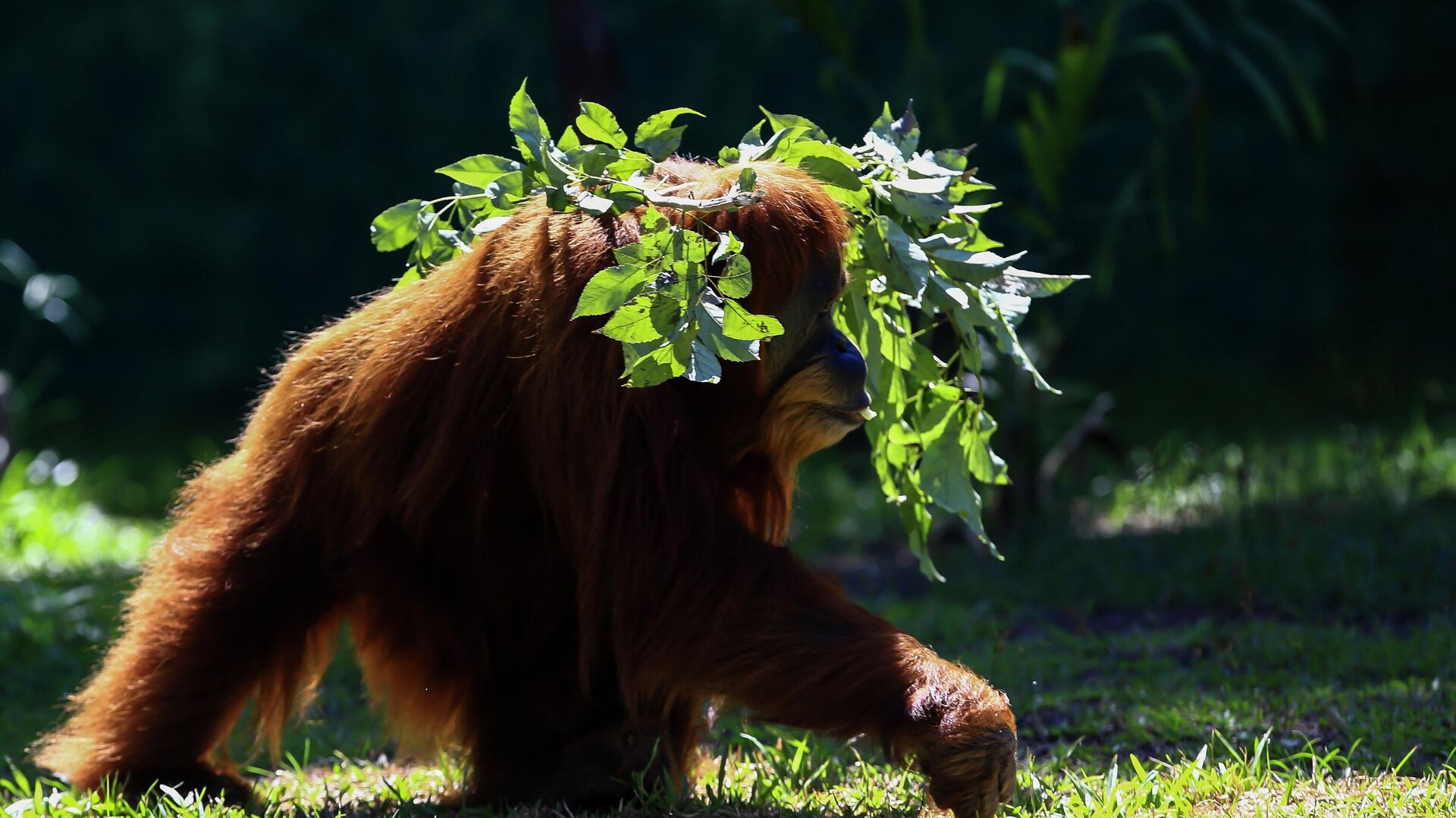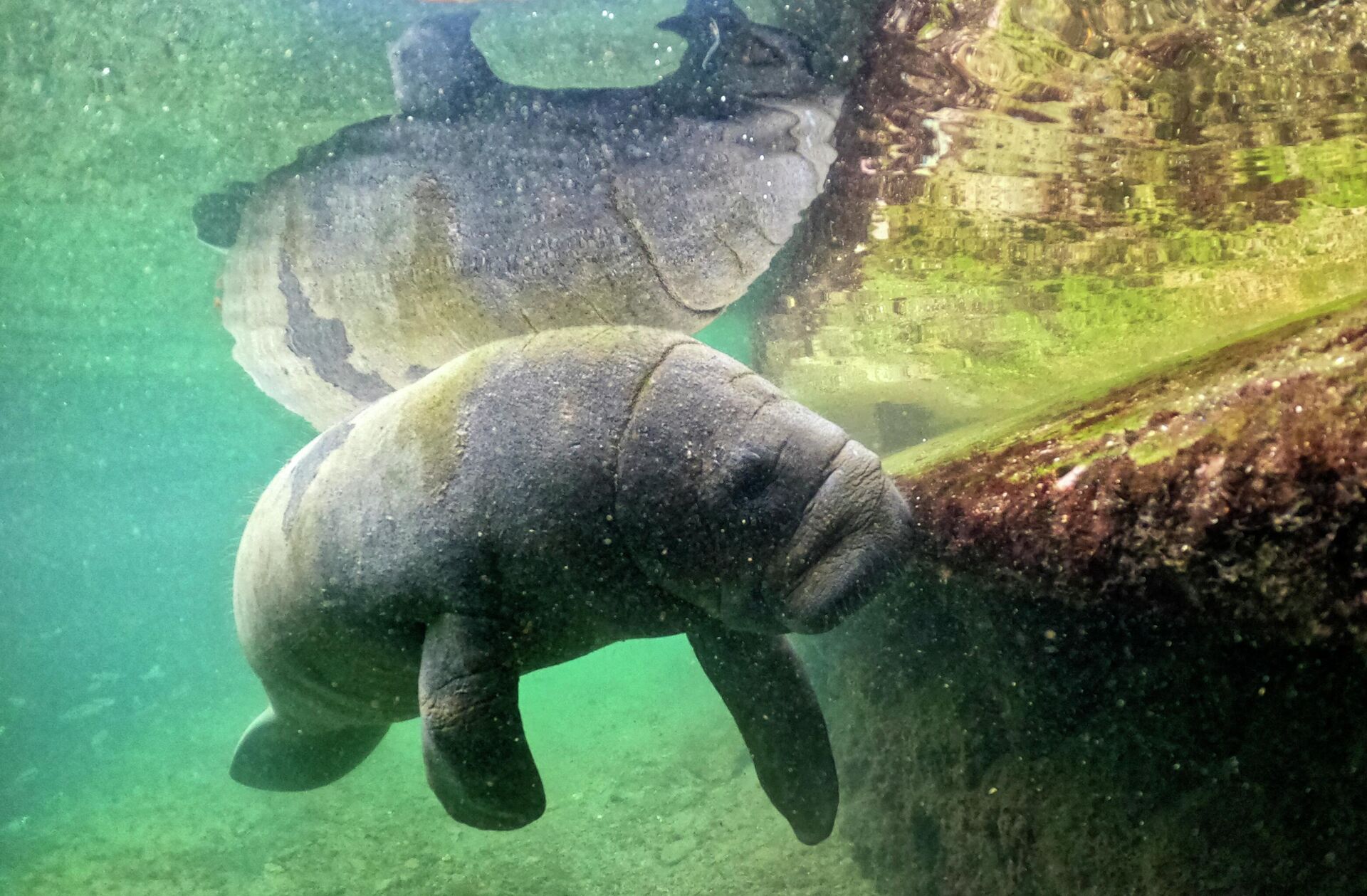https://sputnikglobe.com/20221019/quirky-habitat-change-evolving-shapes--colors-heres-how-animals-adapt-to-survive-1102079807.html
Quirky Habitat Change, Evolving Shapes & Colors: Here's How Animals Adapt to Survive
Quirky Habitat Change, Evolving Shapes & Colors: Here's How Animals Adapt to Survive
Sputnik International
Orangutans, great apes which are associated with images of effortless swinging around on vines, are increasingly hiking around the forest using man-made... 19.10.2022, Sputnik International
2022-10-19T18:38+0000
2022-10-19T18:38+0000
2023-04-21T10:42+0000
science & tech
evolution
poaching
elephants
animals
https://cdn1.img.sputnikglobe.com/img/07e6/0a/13/1102085993_0:161:3071:1888_1920x0_80_0_0_8e5e7b6a913d6fc7fee4c927bb9ccc79.jpg
The Earth’s winged, finned, and four-legged inhabitants are increasingly picking up new behaviors to not only survive, but thrive in a human-ruled world, according to new research. From changes in the diet to evolving shapes, sizes, and colors scores of species are learning to adapt to change, the Popular Science web site says. As an example, peregrine falcons used to hunt pigeons by cliff diving but now opt to use city skyscrapers for advantageous nesting and hunting.Orangutans, great apes which used to move around rainforests swinging on vines, are increasingly moving around the forest using man-made logging roads. Such changes are being noticed in numerous species.Numerous manatees, or “sea cows” every winter die as a result of cold stress, scientists warn, as they lack the thick layers of blubber that allow related marine mammals like walruses to thrive in frigid habitats. Well, they discovered a way out of this dire predicament, and in recent years, the sea cows inhabiting waters of South Florida have found refuge in power plants.Such facilities cycle water through coolant systems, and when that liquid returns to rivers or lagoons as runoff, it is warm. According to a study in the journal Marine Mammal Science dating back to 2006, whenever bay temperatures sink, an estimated 60 percent of the state’s sea cow population heads for the power plants’ discharge.Another example are tuskless elephants. Normally, the huge creatures use their 6-foot-long ivory tusks to dig wells in search of water, lift objects, or tussle with predators.However, a significant number of African elephants in Mozambique’s Gorongosa National Park, once an area subjected to heavy poaching, are now being born without tusks.Tusklessness, according to a 2021 DNA analysis published in the journal Science, is a trait passed down after decades of being shot by hunters for ivory. Increasingly more species are evolving, in a sign of their determination to survive in the wake of mankind's imprint on our planet.
Sputnik International
feedback@sputniknews.com
+74956456601
MIA „Rossiya Segodnya“
2022
News
en_EN
Sputnik International
feedback@sputniknews.com
+74956456601
MIA „Rossiya Segodnya“
Sputnik International
feedback@sputniknews.com
+74956456601
MIA „Rossiya Segodnya“
science & tech, evolution, poaching, elephants, animals
science & tech, evolution, poaching, elephants, animals
Quirky Habitat Change, Evolving Shapes & Colors: Here's How Animals Adapt to Survive
18:38 GMT 19.10.2022 (Updated: 10:42 GMT 21.04.2023) Orangutans, great apes which are associated with images of effortless swinging around on vines, are increasingly hiking around the forest using man-made logging roads. Similar changes are being noticed in numerous species.
The Earth’s winged, finned, and four-legged inhabitants are increasingly picking up new behaviors to not only survive, but thrive in a human-ruled world, according to new research. From changes in the diet to evolving shapes, sizes, and colors scores of species are learning to adapt to change, the Popular Science web site
says.
As an example, peregrine falcons used to hunt pigeons by cliff diving but now opt to use city skyscrapers for advantageous nesting and hunting.
Orangutans, great apes which used to move around rainforests swinging on vines, are increasingly moving around the forest using man-made logging roads. Such changes are being noticed in numerous species.
Numerous manatees, or “sea cows” every winter die as a result of cold stress, scientists warn, as they lack the thick layers of blubber that allow related marine mammals like walruses to thrive in frigid habitats. Well, they discovered a way out of this dire predicament, and in recent years, the sea cows inhabiting waters of South Florida have found refuge in power plants.
Such facilities cycle water through coolant systems, and when that liquid returns to rivers or lagoons as runoff, it is warm. According to a study in the journal Marine Mammal Science dating back to 2006, whenever bay temperatures sink, an estimated 60 percent of the state’s sea cow population heads for the power plants’ discharge.
Another example are tuskless elephants. Normally, the huge creatures use their 6-foot-long ivory tusks to dig wells in search of water, lift objects, or tussle with predators.
However, a significant number of African elephants in Mozambique’s Gorongosa National Park, once an area subjected to heavy poaching, are now being born without tusks.
Tusklessness, according to a 2021 DNA analysis published in the journal Science, is a trait passed down after decades of being shot by hunters for ivory. Increasingly more species are evolving, in a sign of their determination to survive in the wake of mankind's imprint on our planet.


